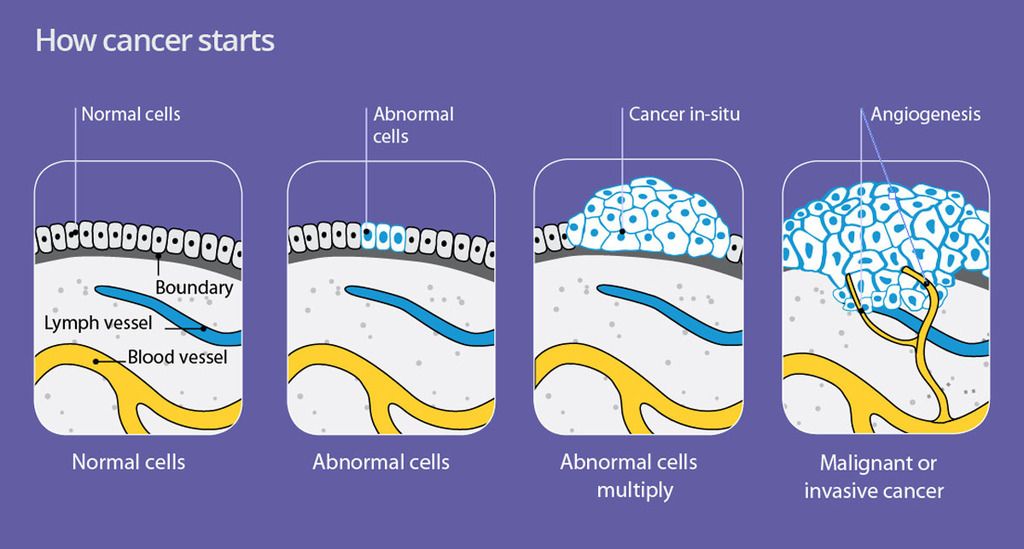
2 June 2015
Most people feel shocked and upset when they first find out that they have cancer.
You may also feel
•Numb
•Frightened and uncertain
•Confused
•Angry and resentful
•Guilty
You may have some or all of these feelings. Or you may feel totally different.
Everyone reacts in their own way.Sometimes it is hard to take in the
fact that you have cancer at all.
Upsetting feelings are a natural part of coming to terms with cancer. All sorts
of feelings are likely to come and go. Your family and friends will probably
have strong feelings too. Remember that you do not have to sort everything out
at once. It may take some time to deal with each issue.
Cancer is the development of abnormal cells that the body cannot control. It is
a disease caused by normal cells changing so that they grow in an uncontrolled
way.The uncontrolled growth causes a lump called a tumour to form. If not
treated,the tumour can cause problems in one or more of the following ways
•Spreading into normal tissues nearby
•Causing pressure on other body structures
•Spreading to other parts of the body through the lymphatic system or bloodstream
It can affect all parts of the body, which means some types are exclusive to women
and others affect only men. Early diagnosis is the key to getting the right treatment.
Cells:
Normal Cells;
Our body is made up of billions of tiny cells that can only be seen under a microscope.
These cells are grouped together to make up the tissues and organs of our bodies.
They are a bit like building blocks.
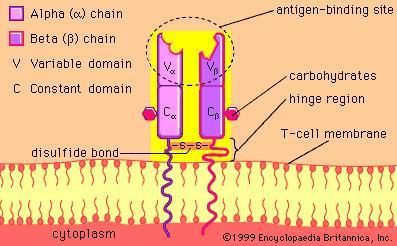
Different types of body tissues are made up of different types of body cells. For
example, there are bone cells in bone and breast cells in the breast.
Normal body cells have a number of important characteristics. They can
•Reproduce themselves exactly
•Stop reproducing at the right time
•Stick together in the right place
•Self destruct if they are damaged
•Become specialised or 'mature'
Body tissues grow by increasing the number of cells that make them up. The cells
reproduce themselves exactly. One cell doubles by dividing into two. Two cells become
four and so on.
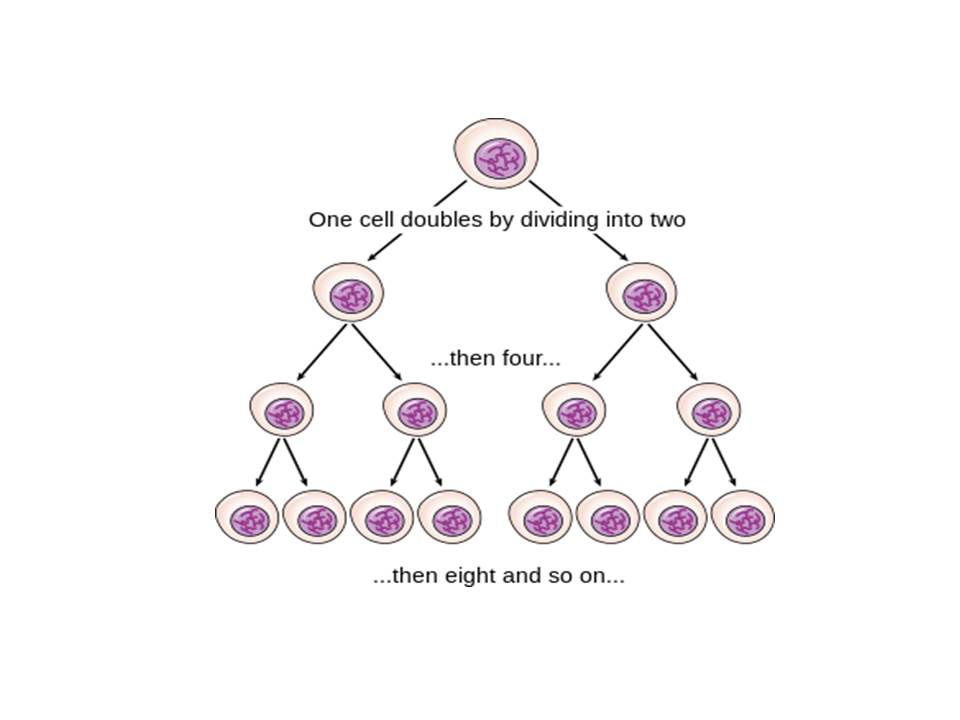
This happens very fast between conception and adulthood. But once we are grown up, most
cells only reproduce in order to replace others that have died, for example through
injury or illness. Some cells carry on reproducing. These include sperm cells, hair cells,
cells in the gut and cells that make blood in the bone marrow.
Not all cells carry on being able to reproduce. Most cells mature and become
specialised for their particular job in the body. Mature cells may lose the ability to
reproduce as they develop. But there will always be enough immature cells around (Stem cells)
to replace cells that are damaged or killed.
When more cells are needed by the body, some cells double up to increase
their numbers. They do this very precisely so that the new cells are exactly the
same as the old ones. Each cell makes copies of all its genes. Then it
splits into two with one set of genes in each new cell. If even more
cells are needed, these new cells will rest for a while and then reproduce again.
The cells will carry on doing this until enough cells have been made.
Normal growth and healing is very orderly and precise. The cells know when there are
enough new cells to mend a cut or when a structure such as a finger
is fully grown. They send chemical messages to each other so that they stop growing
and reproducing when growth or healing is complete.
Scientists are still finding out how the cells do this. The chemical messages come from
the genes inside the cells. Some genes become switched on (activated) and tell cells to
reproduce and other genes tell them not to.
Why does a growing finger end up finger shaped? It seems the cells have a
natural ability to stick together in the right place. Scientists call this cell adhesion.
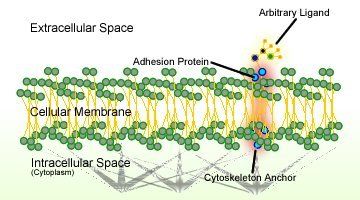
Molecules on the surface of the cell match those on its neighbours. It is a
bit like having a post code. The code makes it very difficult for the cell
to move to the wrong place. But if it does find itself in a place where its
post code is different from its neighbours, it dies.
It seems that human cells are pre-programmed to reproduce up to 50 or 60
times maximum. Then they die. Stem cells provide a pool of dividing cells that the
body uses to restock damaged or old cells. Other things can make the cell self
destruct before it gets as far as doubling 60 times. If the genes of a cell
are very badly damaged, or if it becomes detached from its proper place, it will self
destruct. This is called 'apoptosis'.
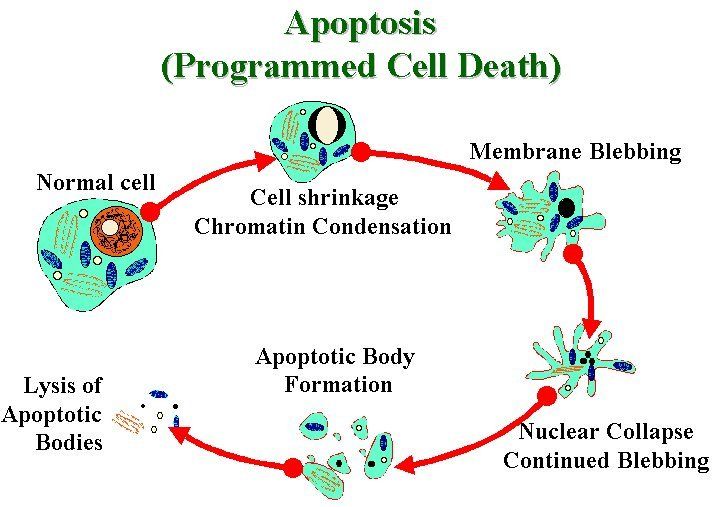
Scientists are doing a lot of work on apoptosis at the moment. If the scientists
can understand what makes a cell self destruct, they might be able to use this
to develop cancer treatment in the future.
Cancer Cells;
Cancer cells are cells that grow and divide at an unregulated, quickened pace. Although
cancer cells can be quite common in a person they are only malignant when the
other cells (particularly natural killer cells) fail to recognize and/or destroy them.
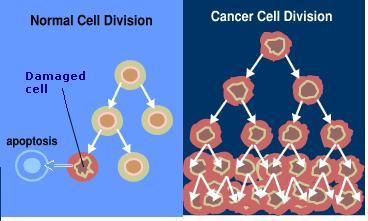
Cancer cells are different to normal cells in several ways. They don't die if they
move to another part of the body and
•Cancer cells don’t stop reproducing
•Cancer cells don’t obey signals from other cells
•Cancer cells don’t stick together
•Cancer cells don’t specialise, but stay immature
•Unlike normal cells, cancer cells do not stop reproducing after they have doubled 50
or 60 times. This means that a cancer cell will go on and on and on doubling.
So one cell becomes 2, then 4, then 8, then 16....
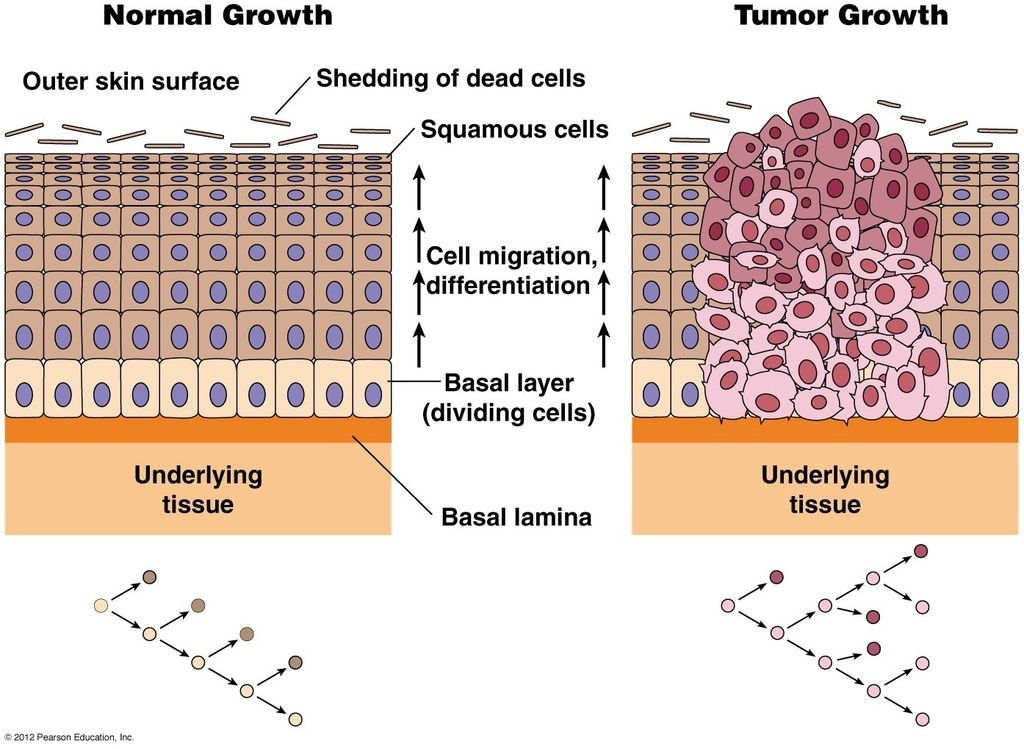
The cancer cells may be able to stop themselves self destructing. Or they may
self destruct more slowly than they reproduce, so that their numbers continue to increase.
Eventually a tumour is formed that is made up of billions of copies of the
original cancerous cell. Scientists describe cancer cells as being 'immortal'.
Something in the cancer cells overrides the normal signalling system. This may
be because the genes that tell the cell to reproduce keep on and on sending
signals. Or because the genes that normally tell the cell to stop reproducing
have been damaged or lost. So the cancer cell keeps on doubling, regardless of
the damage the extra cells cause to the part of the body where the cancer is growing.
Cancer cells can lose the molecules on their surface that keep normal cells in the
right place. So they can become detached from their neighbours.
